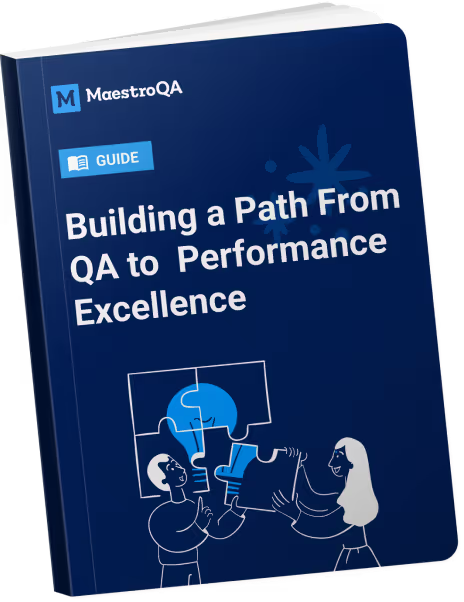Discover in-depth insights through root cause analysis
Uncover the true drivers behind customer concerns effortlessly with MaestroQA's Root Cause Analysis. Seamlessly integrate human intuition with innovative tools, leveraging the irreplaceable value of human expertise alongside advanced technology to drive continuous improvement in customer satisfaction.
















Comprehensive analysis and visualization
AutoQA runs on 100% of your tickets, analyzing key metrics to uncover trends, root causes, and patterns. This data is visualized on MaestroQA’s Performance Dashboards, allowing your team to drill down from overall metrics to individual conversations. By tracking these insights, you can easily determine whether issues are isolated or systemic, empowering your team to make targeted improvements.


Drive focused RCA for maximum impact
MaestroQA’s RCA Dashboards allow you to swiftly create targeted RCA sprints by identifying performance hotspots. Graders can analyze escalated tickets, uncover key trends, and identify agent training needs. Customize rubrics, assign tasks, and monitor progress in real-time, ensuring critical issues are addressed promptly and effectively.
Guide
Building a Path to Performance Excellence with Root Cause Analysis
A retail company faced a surge in high-touch support tickets. By using MaestroQA’s RCA workflows and custom KPIs, they identified process gaps, improved training, and optimized workflows.
40% reduction in high-touch tickets
15% improvement in First Contact Resolution (FCR)
10% increase in Customer Satisfaction (CSAT)
Download the guide to learn how RCA can help you tackle your toughest challenges.


Precise root cause analysis
Build custom metrics in Maestro to analyze 100% of tickets. Whether tracking root causes, behavioral trends, or business processes, these metrics help determine if issues are isolated or systemic. Use tools like Phrase Match, LLM, and Process-Based Metrics to tailor insights to your workflows, all seamlessly integrated into your Performance Dashboard.
Streamlined root cause identification
Refine your root cause analysis process with MaestroQA's targeted workflows. Utilize customizable rubrics, automated filtering, and customizable reporting to streamline your root cause identification efforts, maximizing efficiency and effectiveness.


“It’s often about identifying and fixing issues that are deemed business critical. Even if there isn’t a problem, there are always ways we can enhance our performance.”

Explore common use cases

Insight into Customer Effort
CES gauges how much effort customers experience after their support interactions. A consistently low CES hints at increased effort and the risk of churn.
Analyze top factors contributing to negative CES.
Address areas in the customer journey with high friction.
Enhance customer retention by making targeted improvements based on CES feedback.
Enhancing interaction efficiency
AHT represents the average duration of support interactions. Effective AHT combines both efficient handling and quality outcomes.
Identify specific areas with prolonged AHT and seek improvement.
Streamline agent workflows to optimize AHT without compromising service quality.
Adjust AHT benchmarks based on the nature of channels like Chat, Email, and Phone.
Addressing customer dissatisfaction
DSAT underscores areas of customer discontent after support interactions, shedding light on potential improvements.
Utilize root-cause analysis to understand DSAT feedback in depth.
Differentiate between challenges, be it agent performance or specific processes, affecting DSAT scores.
Elevate agent training programs to better respond to areas indicated by DSAT insights.

Navigating extensive customer interactions
First Call Resolution (FCR) is an indicator of how often issues are resolved on the first interaction. High FCR suggests operational efficiency and customer satisfaction.












